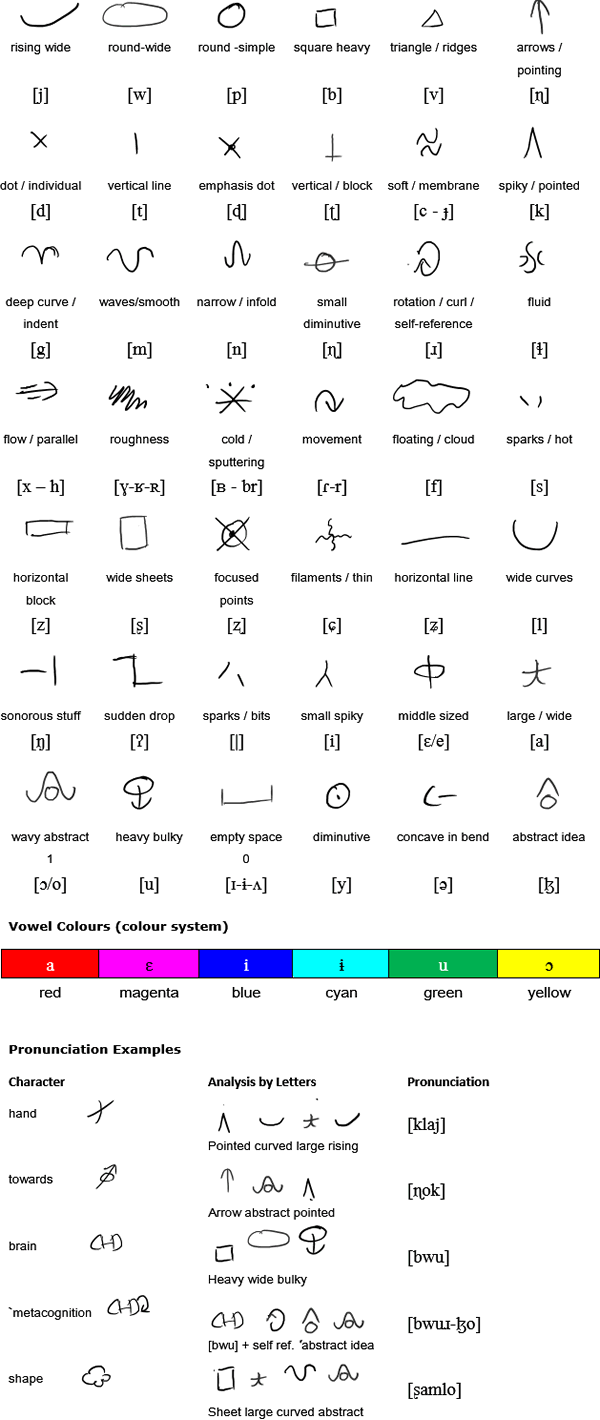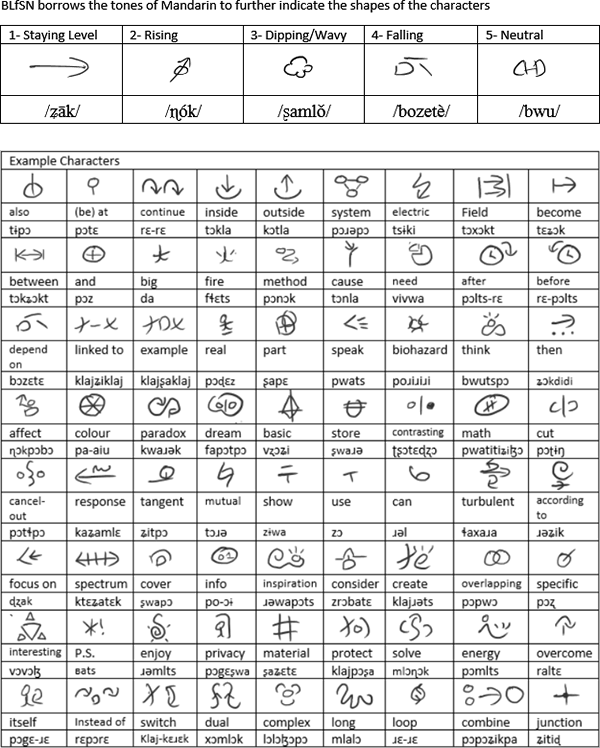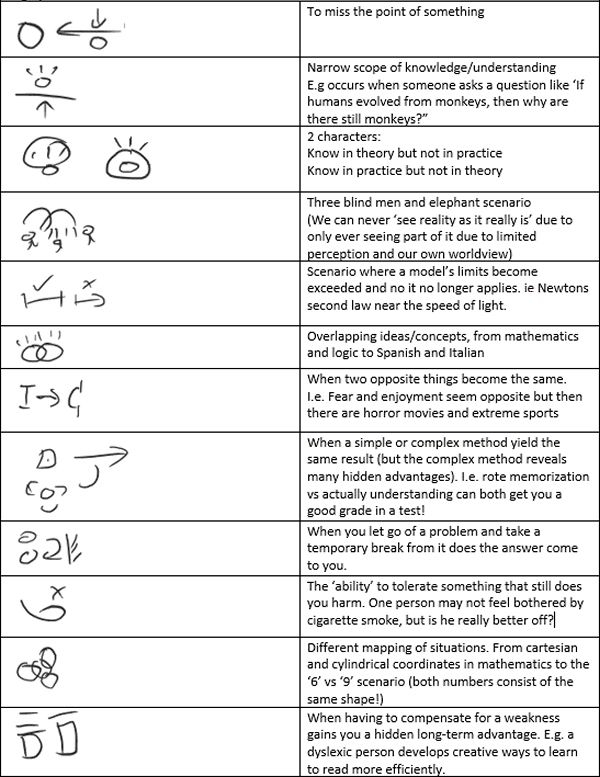Pictonote 
Pictonote is a logographic script created by Maciej Zajaczkowski. It was originally developed as a writing system for faster note taking by creating a characters few few strokes - usually 6 or less. It contains a high proportion of technical vocabulary from science and engineering. The writing system further evolved to become its own language with its own grammar.
Notable features (Pictonote script)
- Type of writing system: logographic, with 44 basic letters, based on the general concepts of roundness, pointiness, width, length, and size. Generally voiceless consonants represent thin light objects, whereas voiced consonants represent thick dark objects.
- Direction of writing: generally left to right, but can also serve as a 2D/non-linear writing system for mind mapping
- Used to write: English and any other language, including itself as a language
- Pictonote is mainly original, with some symbols borrowed from Chinese, Toki Pona and Blissymbolics.
- Contains a higher variety of strokes compared to an alphabet to decrease repetitive use of the same hand-muscle combinations
- The characters get their pronunciation based on their underlying shapes in a similar way to the buoba/kiki effect [more information].
Notable features (Pictonote language)
- Pictonote has a large degree of inflection which one can keep to a minimum for fast note taking, or use to varying degrees depending on need.
- Pictonote is similar to existing sign languages and borrows ideas presented by E-Prime, in that it sparingly uses words such as 'to be, to, etc', and also lacks articles, including the and a.
- Pictonote is precise, logical and technical. It splits up colloquial/ambiguous words such as 'normal' (which means common, healthy, ok) and 'serious' (meaning to work in focused manner, to do things in a strict/formal manner, and trying too hard) into their specific logical meanings. It also, and hence, lacks tautologies, and cuts down on ambiguous and imprecise phrases such as: 'it is said that', 'it is what it is', or 'this is the way of things'.
- Pictonote also contains a variety of language markers not present in English. These include the 'disambiguation marker', which is like a semicolon but for definitions, and the 'shape/drawing marker', which clarifies the fine boundary between logograms and drawings.
Pictonote
Phonology and Conceptual Alphabet

Tones

Highly Abstract Characters

Sample text

Transcription (IPA)
Jwadi pɔɡe pɔz ɮɔ pɔtsɨŋpɔ pɔz kaxpɔʑiʑiɲi pɔlzpɔ bwu-pɔjipwa tsɨpɔʑɡɛ pɔz klaj-mlɔɡ. pɔɡɛtɨpɛda klaj-ɳa klajpɛ bwarɛtspɔ pɔz bwaɮatslaʑ tɨpɛ-pɔz vivwa ɳɔk ʂatɨpɔ tɔɹə klajrə xɛɲ-ɳa ɮɛmtsɬɛ jwɛpɔgɛɲ-ʑi.
Translation
All human beings are born free and equal in dignity and rights. They
are endowed with reason and conscience and should act towards one another
in a spirit of brotherhood.
(Article 1 of the Universal Declaration of Human Rights)
More details about Pictonote (PDF)
Constructed scripts for: Ainu |
Arabic |
Chinese languages |
Dutch |
English |
Hawaiian |
Hungarian |
Japanese |
Korean |
Lingala |
Malay & Indonesian |
Persian |
Tagalog / Filipino |
Russian |
Sanskrit |
Spanish |
Taino |
Turkish |
Vietnamese |
Welsh |
Other natural languages |
Colour-based scripts |
Tactile scripts |
Phonetic/universal scripts |
Constructed scripts for constructed languages |
Adaptations of existing alphabets |
Fictional alphabets |
Magical alphabets |
A-Z index |
How to submit a constructed script
[top]

You can support this site by Buying Me A Coffee, and if you like what you see on this page, you can use the buttons below to share it with people you know.

If you like this site and find it useful, you can support it by making a donation via PayPal or Patreon, or by contributing in other ways. Omniglot is how I make my living.
Note: all links on this site to Amazon.com , Amazon.co.uk
, Amazon.co.uk and Amazon.fr
and Amazon.fr are affiliate links. This means I earn a commission if you click on any of them and buy something. So by clicking on these links you can help to support this site.
are affiliate links. This means I earn a commission if you click on any of them and buy something. So by clicking on these links you can help to support this site.
[top]






, Amazon.co.uk
and Amazon.fr
are affiliate links. This means I earn a commission if you click on any of them and buy something. So by clicking on these links you can help to support this site.